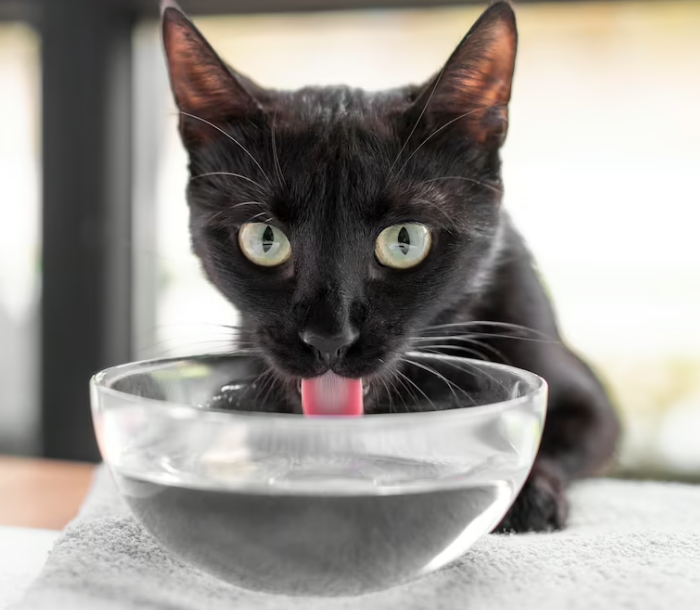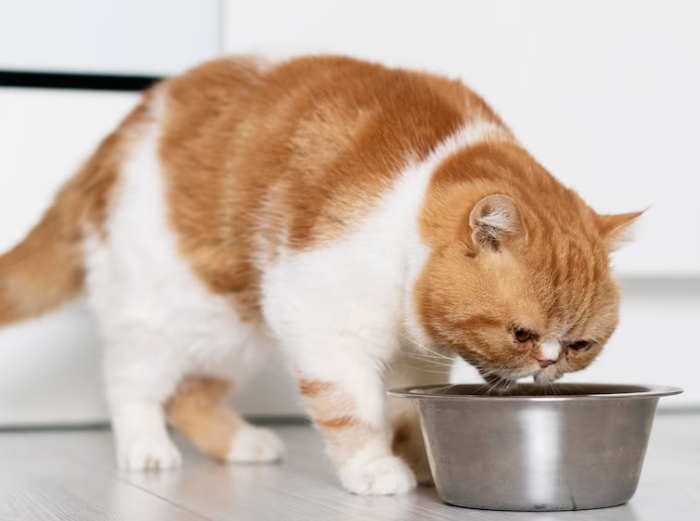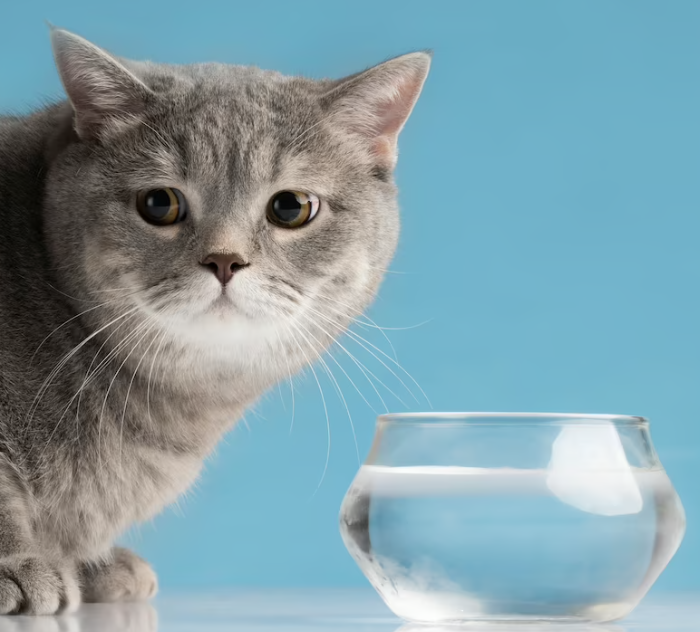2023-07-24
Some of the most important things we know about water are that our body consists of up to 60% water, and we should drink a certain amount of water on a daily basis to stay healthy and hydrated. We all are familiar with the benefits of drinking water and how important it is for our well-being. However, drinking water is as much important to our pets as it is to us. Not drinking enough water can cause health issues in our beloved cats and dogs.
Today we will put focus on our feline friends, whose nature is known to be a bit independent. If the water intake of our cats is insufficient, how can we encourage them to drink more water?

As a general rule cats should drink per day ½ cup of water per 5 pounds / 2.27 kg. It is important to remember though, that every cat has their own needs and the daily water intake also depends on the animal’s health, age, and diet. Cats whose diet consists mainly of wet food will have lower daily water intake than cats who are kept mainly on a dry food diet.
It definitely is! Hydration contributes to many body processes, including keeping the body temperature normal, improving digestion, supplying oxygen, delivering nutrients as well helping tissues and joints stay lubricated.
If your feline friend has had some health issues and refused to eat and drink water, then you may have heard the advice “Make sure that your cat stays hydrated!”.
If you bring a sick cat to a veterinarian, who has not eaten or drunk water in a day, then your paw friend will be put on a system to receive all the liquids and nutrients their body needs. Drinking water will help your feline friend better deal with any health issues they may experience.

In the same way, we clean our dishes, we need to clean those of our cat as well. Make sure to clean your feline friend’s water and food bowl at least once a week with hot water and a dishwasher. Be careful to not leave any detergent on the surface and rinse it thoroughly. Cats are very clean animals and drinking water or eating from a dirty bowl may have a repulsive effect on them.
An easy but effective way to encourage your cat to drink more water is to add a water fountain, to simulate flowing water. Through these gadgets, water will remain fresh and circulating as they do also have filters.
You should keep in mind though that these filters need to be regularly cleaned, otherwise, bacteria will grow. Bacteria buildup can not only be harmful to your kitty but also discourage them from drinking water.
Cats typically do not like having their whiskers wet. Also, your feline friend may not enjoy touching the bowl with their whiskers. A helpful tip, in this case, might be to fill the water bowl to the top or provide your cat with a shallow bowl. That way they will be able to limit the access of their whiskers to both the water and the bowl’s surface.
If you have multiple cats, this will definitely be needed. Multiple cats need to have their own food and water bowls. However, even if you raise one cat only, placing water bowls in various locations at home, may encourage them to drink more water throughout the day.
By “regularly” we mean at least once a day. As mentioned above, cats are very clean animals who attach importance to the appearance of their coat, and how their environment looks, including how clean their food/water bowls are. Even if there is still some water in the bowl, do not wait for your cat to drink it all before you refill the bowl with fresh water.
Since our pets have their taste preferences just like we have, your cat may simply not enjoy how the water tastes. Although it may sound a bit surrealistic, we can not completely disregard this possibility.
You can try adding a small amount of chicken or beef broth to your cat’s water or maybe a few drops of tuna juice. Always keep track of how much flavor you add, in order to prevent your cat from gaining weight and eventually developing some health issues. This “trick” can be used from time to time, but it should not become a regular part of your cat’s diet.
If your cat is playful, they may enjoy playing with an ice cube. A simple trick you can try is to add 1-2 ice cubes to your cat’s water bowl or put them on the floor. Let your cat play with them and lick them.
As the name implies, wet food has a higher moisture content than dry food. If your cat does not drink enough water, you may want to consider increasing the wet food portion of their diet. Wet food will help your paw friend stay hydrated.
It will also be beneficial for your cat's urinary tract, as it helps prevent crystals from building in the urine. Not to mention that cats usually enjoy the taste of wet food better than that of dry food.
Make sure that your paw friend’s food and water source are easy to access. Moreover, cats are creatures of habit, so you should not relocate your paw friend’s water bowl, once they get used to accessing it in a certain spot at home. Also, it is important for owners of multiple cats, or pets in general, to provide enough water and food sources for each of them.
The more energy your cat spends during the day, the more water they are likely to want to drink. Also, providing your paw friend with toys / playing with them personally, will help them remain healthy and fit. Playing with your cat and spending a pleasant time with them will strengthen the bond between you two.

Be aware of your cat’s routine and habits, including how much water they drink throughout the day. Stay actively engaged in your pet's life and keep track of their health. This is important as it will allow you to notice any changes that may occur. In case you are wondering why your cat has changed their habits, pay attention to the environment first.
Cats can be emotional and respond to any changes in their environment. If your feline friend seems to lack energy, has decreased appetite, and does not drink enough water, you should consult a veterinarian.
If your cat exclusively eats dry food, they may not receive all the needed hydration. Too much dry food can not only lead to dehydration but to further health issues. Put your cat on a healthy and balanced diet, which provides all the nutrients they need.